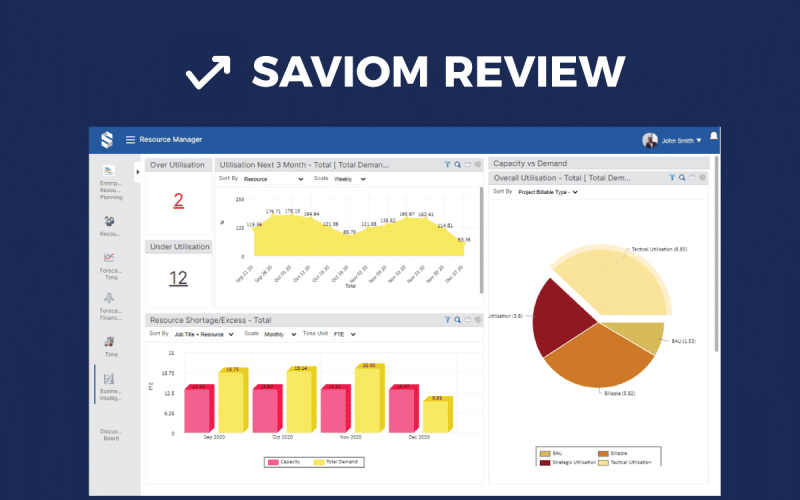Business is becoming increasingly competitive today. As such, firms and industries are adopting novel approaches that streamline their operations. Companies are now experimenting and implementing new processes, methodologies, and tactics to ensure their business runs smoothly without experiencing any unanticipated problems.
The agile approach, while not exactly new, is a project management technique that many companies still haven’t adopted. Teams carry it out using an iterative approach. This means the projects are segregated into small, easily-manageable parts, which are to be completed over a short period of time.
Agile Management Vs. Waterfall Management
The agile project management process handles projects by dissecting the task into different phases. It requires continuous collaboration with stakeholders, customers, or clients to integrate refinement at every stage. On the other hand, the traditional project management approach- also known as waterfall management, enables businesses to run projects in a linear, sequential manner. This method follows a strategic cycle of initiation, planning, execution, monitoring, and closure.
Which approach is better?
The waterfall project management approach comes with clearly defined goals and gives the manager complete control and accountability over the project. Unfortunately, it is rigid, as time and budget are deemed variable entities while the requirements are set in stone. As a result, the projects often struggle with meeting the requirements within the deadline on the initial budget.
Considering this, agile project management is more beneficial for modern businesses. This is because the method allows firms to easily and quickly adapt to changes, create a transparent business operational model, and meet deadlines and budgetary requirements. Check TCGen’s way to get the best of both.
Common Challenges Faced by Agile Teams

The agile approach provides businesses with numerous benefits. Unfortunately, implementing this approach in organizations can come with some challenges. Let’s explore a few problems businesses can encounter when moving to an agile project management approach.
1. Effective Communication with Stakeholders and Business Owners
Businesses typically employ agile project management for dynamic projects. In such cases, the requirements of the tasks are continuously updated throughout the project implementation stage, and therefore, the teams need to adopt the changes instantaneously. Due to this, it becomes difficult for project managers to communicate the changes in requirements to all members taking part in the project.
Solution: Keeping Stakeholders in The Loop
To avoid the problem of miscommunication in an agile model, project managers can take effective measures to ensure that each party has complete visibility of the projects’ progress. Additionally, all parties must be clearly informed on the project’s milestones and the strategy to meet them.
Project managers should also convey all the responsibilities to the respected team member. Moreover, the progress should be tracked, and all team members should be informed of all the updates or changes in the project’s course.
Essentially, businesses can also leverage agile software management tools to update all team members throughout the process. These collaboration tools enable priority management and allow individuals to track work progress and generate reports and analytics for stakeholders. These tools can also benefit organizations running remote or hybrid work operations.
2. Moving Away from Outdated or Tedious Processes
One of the major problems businesses experience during the transition to an agile work environment is deviating from the traditional practices. Most organizations heavily rely on their traditional practices and operations to ensure the job gets done within the specified timeframe. However, following the traditional processes can become quite tedious and prevent the business from leveraging new approaches to get optimal results.
Solution: Forming Processes That Address Everyone’s Needs
Setting up processes to improve workflows can save time. However, if these processes remain unchanged, organizations can struggle with a delay in operations.
To make effective changes, organizations can hold team meetings to discuss the different initiatives the teams can take to meet their set objectives. The primary intention of these brainstorming sessions should not be to try a different approach.
Instead, it should focus on discovering elements in the current work structure that yield benefits and distinguishing them from those that fail to bring successful outcomes. Organizations should also look into offloading to assistants who specialize in their department’s tasks.
3. Minimizing Waste of Resources
Implementing changes in larger organizations can take a lot of time. Even making a slight change in operational structure can take weeks or months. When organizations transition to an agile model, the lack of planning in the areas that require change drives up costs. Businesses can end up crafting an overly expensive architecture that fails to deliver the results they are aiming for. Therefore, it is imperative for managers to comprehensively plan each aspect of the agile management transformation to ensure optimal results.
Solution: Iterative working
Businesses can easily avoid this issue by carrying out a detailed exploration of the new model’s architecture, design, and estimates. For growing organizations, it is best to revisit the agile project management requirements every couple of months to ensure the crafted plan meets the growing needs of the business model.
Additionally, teams can work iteratively to certify timely deliveries during the transition stage. All the teams undergoing agile project management can be assigned to execute smaller portions of the project. By taking this initiative, organizations can complete project components sooner, respond to feedback, and improve the output before the deadline for the entire project comes closer.
The Bottom Line
Businesses need tight operations to succeed in this highly competitive market. An agile project management methodology can help businesses do just that. In this strategy, customers are involved in the development stages from the get-go. Therefore, the project can be completed with minimal errors, thus saving time and resources. Additionally, agile project management also yields superior results due to its flexible and adaptable nature.
More Resources For You:














